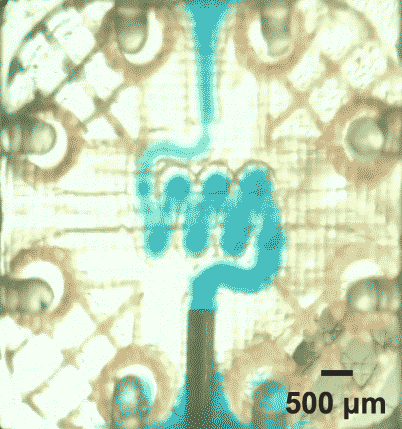
These tissue engineered scaffolds are designed to efficiently deliver oxygen and nutrients to densely packed cell clusters, eliminating the requirement for spontaneous organoid formation, and can be used as complex co-culture platforms for various therapeutic, disease modeling, and regenerative medicine applications.
Holographic
Laser Printing
Prellis’ proprietary holographic laser printing technology enables rapid construction of high-resolution biocompatible scaffolds.
Prellis bioprints complex micron-feature sized scaffolds up to 400 times faster than other laser printing technologies. Prellis holographic printing is fully integrated with internally developed software, biomaterial chemistry, and optical engineering technology.



Large 3D Tissue Models
Large organoids and tissue models can be grown in vitro in flow-free culture, reducing the time to organoid development while maintaining the properties of a 3D organoid. Organoid scaffolds are laser printed using transplantable hydrogel material allowing for both in vitro studies and transplantation of the same tissues into animal models. To support cell adhesion, growth, and differentiation, Prellis scaffolds can incorporate proteins, growth factors, and small molecules.

Additional 3D Tissue Models
The ability to precisely engineer scaffold architecture bypasses the need to rely on spontaneous organoid formation or in vitro vascularization, supporting large tissue growth.

Prellis vascular scaffold supporting complex multichannel microfluidics (CAD file and scaffold)
.png)

3D Printing Enables Access to Human Biology
Ultra fine resolution allows for printing vascular-like channels and microarchitecture that mimic human biology. The thin, gas and nutrient permeable channel walls of the microstructures and vessels facilitate nutrient diffusion in a cell-dense environment.
Tissue scaffolds are printed in various conformations with tunable biochemical and mechanical properties. Prellis tissue models can be seeded with multiple cell types sequentially, allowing for complex co-cultures.



